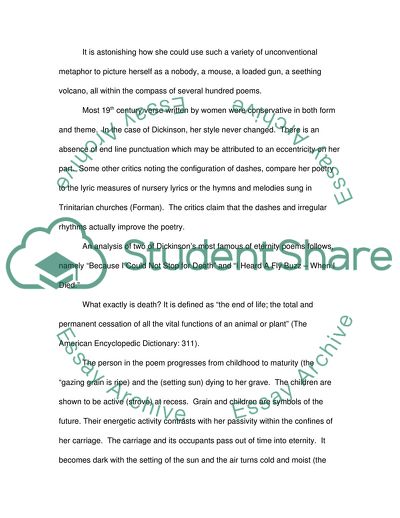Emily Dickinson Poet of Solitude Essay Example | Topics and Well Written Essays - 1750 words. https://studentshare.org/literature/1745005-emily-dickenson
Emily Dickinson Poet of Solitude Essay Example | Topics and Well Written Essays - 1750 Words. https://studentshare.org/literature/1745005-emily-dickenson.


